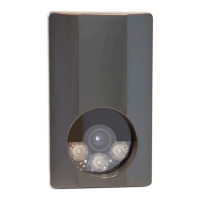ANPR
© Nedap AVI, P.O. Box 103, NL-7140 AC GROENLO Page 21 of 27
5.2.7 IMAGE RESULT
This Image Result page displays image and grabbing data of the last detected vehicle. The page is automatically
and periodically reloaded so it is possible to keep open and view in real time the system results. Since the page is
periodically being reloaded, it might happen that not all system-detected vehicles are displayed. It may happen,
with heavy traffic, that the refresh period is not capable of showing all vehicles that actually have passed.
Next to the image, the following data is displayed:
PLATE: The number plate associated with the recognition.
COUNTRY: Three-character string indicating the plate's country of origin. See appendix A.
N. READ: The number of images containing the read plate.
CHAR WIDTH/HEIGHT: The character width and height, in pixels. Helpful when adjusting the minimum and
maximum character size in the Plate Reader settings page (see chapter 5.2.3).
SHUTTER: The exposure time, in microseconds, used for image grabbing.
STROBE: The infrared illuminator activity time, in microseconds, used for image grabbing.
GAIN: The gain used for image grabbing.
DATE/TIME: Date and time at which the image was grabbed.
5.2.8 TEXT RESULT
The Text Results page displays the returned values of the OCR algorithm for each grabbed image.
14/07/2011 14:46:38:643 ZLSZ17-NLD(7) Acq(Sh=1226ms, St=1000ms, G=284, GP=2, IL=50)
14/07/2011 14:46:38:643 YT57HB-NLD(5) Acq(Sh=1158ms, St=1000ms, G=284, GP=2, IL=50)
14/07/2011 14:46:38:643 NOTREAD Acq(Sh=1717ms, St=1000ms, G=284, GP=3, IL=50)
The text lines will contain the recognized number plate (if any), the corresponding date and time and the
shutter, strobe and gain parameters that were used during the image processing.
5.2.9 STATISTICS
This page contains the OCR statistics for the last 24 hours of operation.
The upper part of the OCR Statistics page contains the percentages recognized as READ, NOT READ or NO PLATE.
The lower part contains the percentage of readings for the 3 different points of image grabbing. This allows
viewing, at any time of the day, how many vehicles have been detected as well as what grabbing points were
used. Using this information, the user can evaluate whether the grabbing settings are correct and consistent and
calculate the recognition rate.

